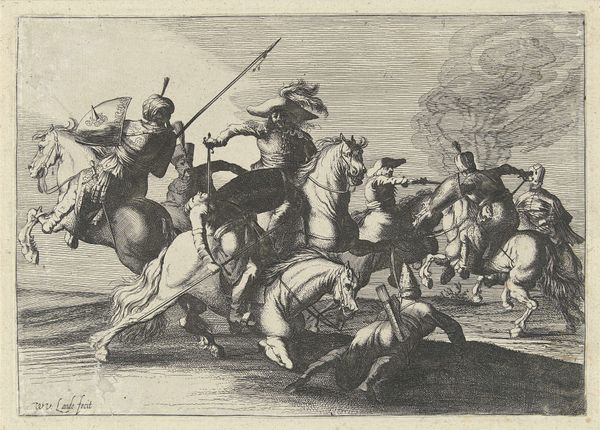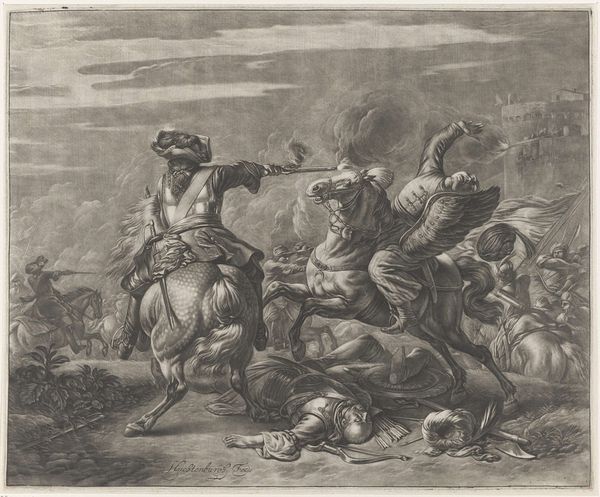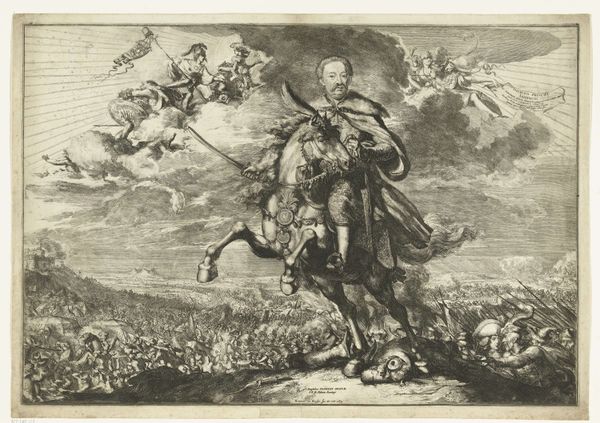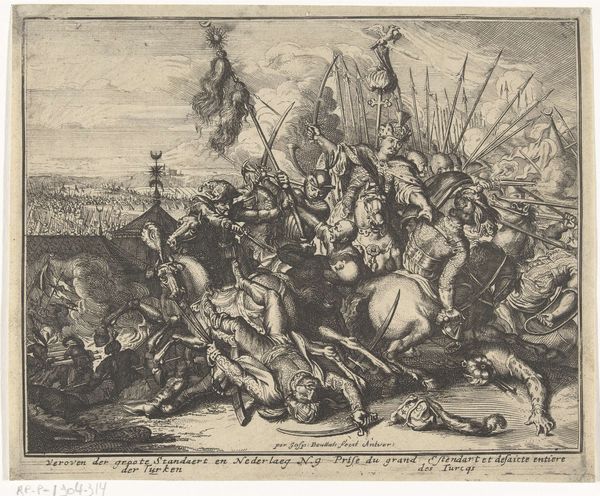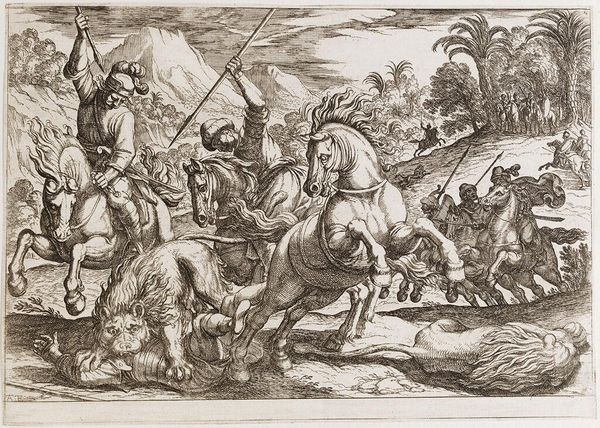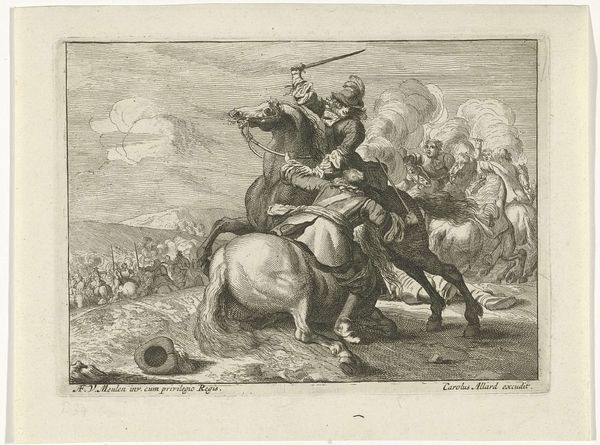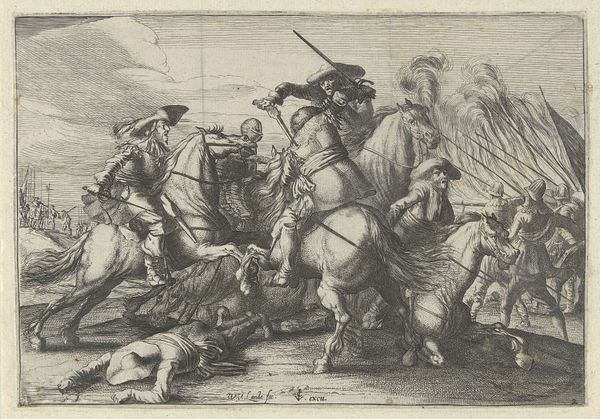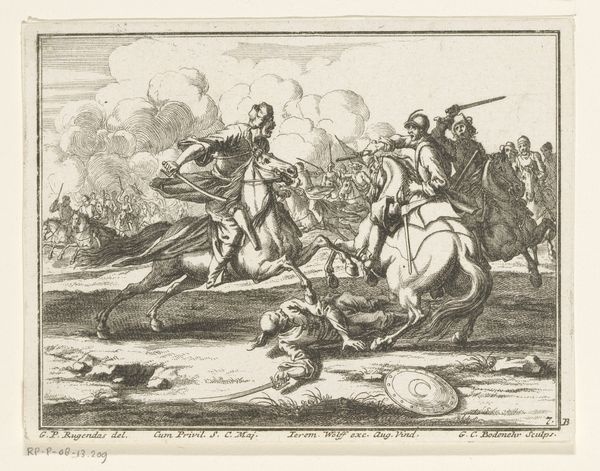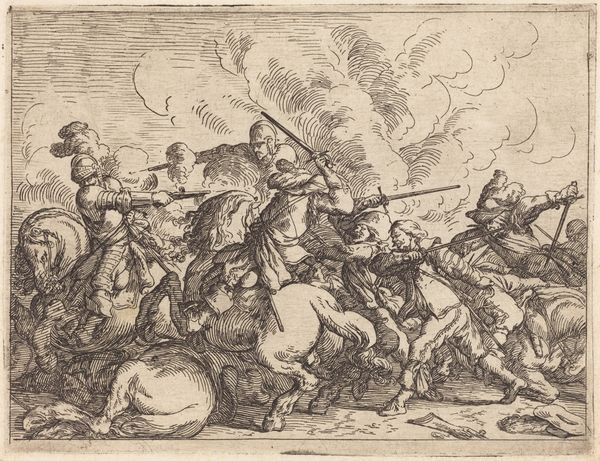
print, engraving
#
baroque
# print
#
landscape
#
figuration
#
line
#
history-painting
#
engraving
Dimensions: height 424 mm, width 577 mm
Copyright: Rijks Museum: Open Domain
Editor: We’re looking at "Wolvenjacht," a print, likely an engraving, made sometime between 1630 and 1718, attributed to Willem van der Leeuw. It depicts a chaotic wolf hunt. There’s so much activity crammed into the image. What strikes you most about this piece? Curator: Immediately, I'm drawn to the means of production here. It’s an engraving, meaning a collaboration between artist and printmaker was essential. Van der Leeuw's name suggests the designer but someone else actually labored to translate the design onto the plate. The widespread availability of prints meant this violent scene circulated widely, shaping perceptions about humanity's relationship with the natural world. Do you notice how this availability and access shapes the content, specifically violence? Editor: Yes, it does feel very deliberate, like it's meant to make an impact precisely because it can be distributed so broadly. What's the importance of making this violent scene reproducible? Curator: Precisely. Consider the social context. Who had access to these prints, and what ideologies did this violence support? The figures on horseback likely represent the elite, who through leisure activities like hunting reinforced their dominance. The print performs ideological labor, normalising both violence against animals and class distinctions. Editor: That's a perspective I hadn't considered. I was so focused on the dramatic composition of the hunt itself. I hadn't fully grasped how the act of printing reinforces a social structure and provides some kind of visual ideology. Curator: And what about the source of the raw materials - the metal plate? It went through a production cycle entirely detached from that presented by the Wolvenjacht itself, offering commentary to modes of exchange during its own period. It's this interplay between artistic intention, material realities, and social power that fascinates me about prints like these. Editor: This really emphasizes the art as an object. Looking beyond the immediate scene to see all these different social and materials factors, I understand more deeply the connection of materiality with power and ideology of the art's message. Thanks!
Comments
No comments
Be the first to comment and join the conversation on the ultimate creative platform.

